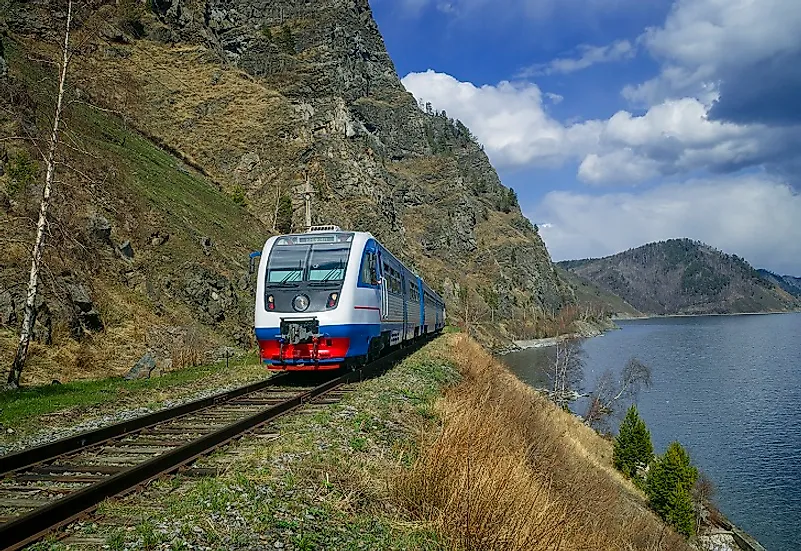Russia's Trans-Siberian Railway

5. Description
The Trans-Siberian Railway is the longest single rail line in the world. Also known in Russia as the Great Siberian Way, it runs a total of 5,867 miles from Moscow to the port of Nakhodka, just beyond the city of Vladivostok. The railway passes 87 cities and towns and crosses sixteen rivers including the Volga, Ob, and Amur Rivers. About 130 miles of the Trans-Siberian follows along the banks of Baikal Lake and, nearing the railway’s end, about 24 miles are along the coast of the Sea of Japan. A trip all the way across the Trans-Siberian Railway, from Moscow to Nakhodka, takes about eight days.
4. Construction and Historical Role
The construction of the railway began in 1891 simultaneously in the west, from Moscow, and in the east from Vladivostok. Due to the harsh weather conditions, construction was extremely difficult. The forests and large rivers which run through Siberia also were obstacles in laying down track. In the region around Baikal Lake, workers were force to use dynamite to create the mountain tunnels. They also constructed bridges across the mountain river canyons. Apart from the difficult terrain, the cost of such an endeavor and the required manpower were also problematic for the Russian government. The latter was mostly solved by using prisoners and soldiers as workers, who worked at a record pace to complete the railway in only twelve years. They succeeded in connecting Europe to the Pacific and opened Siberia to settlement and industrialization. The Trans-Siberian Railway was of great economic and political importance for the Russian Empire and later the Soviet Union.
3. Modern Significance
Today the route remains the longest railroad journey in the world. It runs through eleven time zones and there is the possibility that the route may become longer. The Russian government is interested in extending the line to Seoul, through North Korea, in order to import Asian manufactured goods. A passenger service from Moscow to Seoul may also be a possibility but currently the commercial interest takes precedence. New track has already been laid in North Korea. The Trans-Siberian railway continues to be an important means of transporting goods and people wanting to reach various parts of Siberia.
2. Sites To See Along The Way
The cities en route have become interesting cultural centers. Moscow, currently at the western most end of the railway, has many fascinating things for tourists and locals. Two and a half hours of train travel leads to the city of Vladimir, which was once the capital of Russia, and to its four UNESCO World Heritage cathedrals. Nizhny Novgorod is six hours away and was an important trading center with the orient. It was closed to outsiders for many years, during which time it served as a detention area for political exiles. The city also holds well preserved memorials from the Thirteenth and Fourteenth Centuries. The Baykalsk region is popular for its ski resorts. Since there is a compulsory overnight stay in Khabarovsk, passengers can take advantage of the many theaters and museums in the city.
1. Environmental Threats and Territorial Disputes
Though there are plans for extending the railway, and test operations on the rail track were already completed, disputes between North and South Korea are hindering progress. Shipping companies in the east are also endangering the railway’s value as a means of communication and transport between east and west. However, the railway could remain a competitive alternative to sea transportation if the South Korean funds help the Russian government to modernize and extend the Trans-Siberian Railway.











